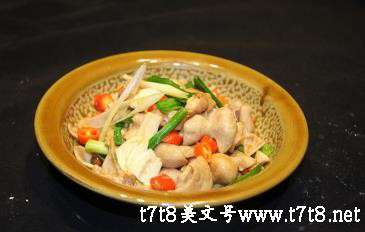从词汇学中词义辐射和连锁联结的角度看,指出随着语言的发展,英语名词单复数意义问题变得日益复杂。下面是学习啦小编整理的在英语中什么是单复数,欢迎阅读。
在英语中什么是单复数
在美国英语、俄语、西班牙语、德语、法语等屈折语里面,名词(或形容词、代词、冠词)都有单复数的变化。单数表示“一”,复数表示“多于一”的概念。
英语的单复数
一、绝大多数的可数名词的复数形式,是在该词末尾加上后辍-s。读音变化:结尾是清辅音读[s],结尾是浊辅音或元音读[z]。例:friend→friends; cat→cats; style→styles; sport→sports; piece→pieces
二、凡是以s、z、x、ch、sh结尾的词,在该词末尾加上后辍-es构成复数。读音变化:统一加读[iz]。例:bus→buses; quiz→quizzes; fox→foxes; match→matches; flash→flashes
三、以辅音字母+y结尾的名词,将y改变为i,再加-es。读音变化:加读[z]。例:candy→candies; daisy→daisies; fairy→fairies; lady→ladies; story→stories
四、以-o结尾的名词,如果不是外来词或缩写,就加-es,否则加-s构成复数。读音变化:加读[z]。例:tomato→tomatoes; potato→potatoes; torpedo→torpedoes; bingo→bingoes反例:silo→silos; piano→pianos(外来词); photo→photos; macro→macros(缩写词)
五、以-f或-fe结尾的名词,多为将-f或-fe改变为-ves,但有例外。读音变化:尾音[f]改读
[vz]。例:knife→knives; life→lives; leaf→leaves; staff→staves; scarf→scarves反例:roof→roofs
六、以-us结尾的名词(多为外来词),通常将-us改变为-i构成复数。读音变化:尾音[Es]改读[ai],其中[kEs]要改读为[sai],[gEs]要改读为[dVai]。例:fungus→fungi; abacus→abaci; focus→foci; cactus→cacti; cestus→cesti
七、以-is结尾的名词,通常将-is改变为-es。读音变化:尾音[is]改读[i:z]。例:axis→axes; basis→bases; naris→nares; hypothesis→hypotheses; restis→restes
八、以-ix结尾的名词,通常将-ix改变为-ices,但有例外。读音变化:尾音[iks]改读[isi:z]。例:matrix→matrices; directrix→directrices; calix→calices; appendix→appendices 反例:affix→affixes
九、以-um结尾的名词,将-um改变为-a。读音变化:去掉鼻尾音[m]。例:forum→fora; stadium→stadia; aquarium→aquaria; datum→data; vacuum→vacua
十、以-a结尾的名词,在该词末尾加上后辍-e。读音变化:尾音[E]改读[i:]。例:larva→larvae; formula→formulae; ala→alae; media→mediae; hydra→hydrae
十一、部分单词的复数形式不变。读音变化:保持原音。例:fish→fish; sheep→sheep; cattle→cattle; deer→deer; salmon→salmon
十二、极少数单词,其复数形式没有任何规律。读音变化:没有规律。例:man→men; woman→women; child→children; person→people; ox→oxen
十三、一些单数词得加en才能变成复数词:例:ox→oxen; child→children; brother→brethren
十四、一些单数词得改头换面一番,才能变成复数词例:analysis→analyses分析; basis→bases基础; datum→data数据; foot→feet; formula→formulae/formulas公式; goose→geese; louse→lice虱子; man→men mouse→mice; medium→media/mediums媒介; memorandum→memoranda/memorandums备忘录; parenthesis→parentheses 圆括号; phenomenon→phenomena现象; radius→radii 半径 tooth→teeth; woman→women
十五、有些名词是单数、复数不分的例:deer; fish; cannon; sheep; salmon 鲑鱼; trout 鳟鱼
十六、一些名词虽分单数、复数,但出现次数多的总是单数词例:abscence; clothing; film; help; furniture家具; machinery机械; news; scenery风景; sugar; traffic交通
十七、另一些名词则以复数词出现的机会较多例:bellows风箱; clothes; police; shorts短裤; scissors剪刀; spectacles眼镜; shears大剪刀 trousers长裤; wages工资
十八、compound nouns,这类复数词是以主要的名词来表示例:daughter-in-law→daughters-in-law 媳妇; father-in-law→fathers-in-law岳父 man-of-war→men-of-war兵舰; maid-servant→maid-servants step-son→step-sons晚子; son-in-law→sons-in-law
十九、若表达具体数目,要借助数量词 例:pair(对,双); suit(套); a pair of glasses; two pairs of trousers
二十、另外还有一些名词,其复数形式有时可表示特别意思,例:goods货物,waters水域,fishes(各种)鱼
二十一、除人民币元、角、分外,美元、英镑、法郎等都有复数形式。例:a dollar, two dollars; a meter, two meters
英语名词单复数用法大全
一、 规则名词的复数形式:名词的复数形式,一般在单数形式后面加-s或-es。现将构成方法与读音规则列表如下:
1 、一般情况在词尾加-s: map-maps, sea-seas, girl-girls, day-days
2 、以s, x, ch, sh结尾的名词后加-es: class-classes, box-boxes, watch-watches, dish-dishes 3 、以-f或-fe结尾的词 变-f和-fe为v再加-es: leaf-leaves, thief-thieves, knife-knives,
loaf-loaves, wife-wives;加-s: belief-beliefs, chief-chiefs, proof-proofs, roof-roofs, gulf-gulfs 4 、以辅音字母加y结尾的名词,变y为i加-es :party-parties, family-families, story-stories, city-cities
5 、以音辅字母加y结尾的名词,或专有名词以y结尾的,加-s toy-toys, boy-boys, day-days, ray-rays, Henry-Henrys
6 、以辅音字母加-o结尾的名词一般加-es:hero-heroes, Negro-Negroes, potato-potatoes, tomato-tomatoes;不少外来词加-s: piano-pianos, photo-photos, auto-autos, kilo-kilos, solo-solos 两者皆可:zero-zeros/zeroes, volcano-volcanoes/ volcanos
7 、以元音字母加-o结尾的名词加-s:radio-radios, bamboo-bamboos, zoo-zoos
8 、以-th结尾的名词加-s:truth-truths, mouth-mouths, month-months, path-paths
二、不规则名词复数:
英语里有些名词的复数形式是不规则的,现归纳如下:
1、改变名词中的元音字母或其他形式:man-men, woman-women, foot-feet, goose-geese, mouse-mice
2、单复数相同:sheep, deer, series, means, works, fish, species li, yuan, jin,
3、只有复数形式:ashes, trousers, clothes, thanks, goods, glasses, compasses, contents
4、一些集体名词总是用作复数:people, police, cattle, staff
5、部分集体名词既可以作单数(整体)也可以作复数(成员): audience, class, family, crowd, couple, group, committee, government, population, crew, team, public, enemy, party
6、复数形式表示特别含义:customs(海关), forces(军队), times(时代), spirits(情绪), drinks(饮料), sands(沙滩), papers(文件报纸), manners(礼貌), looks(外表), brains(头脑智力), greens(青菜), ruins(废墟)
7、表示“某国人”加-s:Americans, Australians, Germans, Greeks, Swedes, Europeans;单复数同形Swiss, Portuguese, Chinese, Japanese;以-man或-woman结尾的改为men,-women,Englishmen, Frenchwomen
8、合成名词将主体名词变为复数:sons-in-law, lookers-on, passers-by, story-tellers, boy friends; 无主体名词时将最后一部分变为复数:grown-ups, housewives, stopwatches;将两部分变为复数:women singers, men servants
看了在英语中什么是单复数的人还看了:
1.
2.
3.
